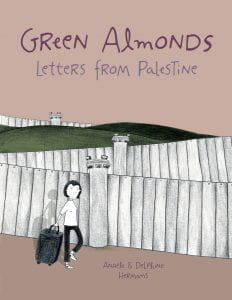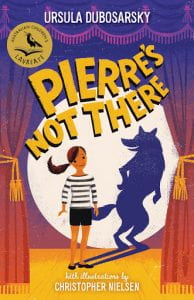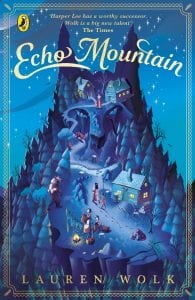 Two sisters show life in different countries and different cultures in this graphic novel by Anaele and Delphine Hermans – a memoir of Anaele’s 10-month stay in Bethlehem while volunteering for a youth organization/NGO.
Two sisters show life in different countries and different cultures in this graphic novel by Anaele and Delphine Hermans – a memoir of Anaele’s 10-month stay in Bethlehem while volunteering for a youth organization/NGO.
Presented as postcards and letters shared between the two sisters, ‘Green Almonds’ highlights the living conditions of populations in war-torn zones of the world. At the same time, it humanises these conditions as they accept them as a ‘normal’ part of life.
Anaele’s initial arrival presented anxious times from the word go, as she negotiated customs at Tel Aviv airport in 2008. Her stories about the months that followed illustrate some of the precarious situations faced by everyday people in these occupied territories. At the same time, descriptions of simple joys in life shared amongst friends show things she enjoyed with her Palestinian friends. Cultural differences aside, there is still a place where: “we sing, we laugh, we talk until late into the night”.
As the correspondence journeys between Bethlehem and Liege, great contrasts are displayed in the lives of the two sisters. Interestingly, the postcards from Delphine mainly chat about shallow day-to-day life events at home in Liege; Anaele’s letters provide greater detail, empathy and passion about her experiences, as she negotiates a world apart from Belgium.
Of course, ‘Green Almonds’ is also a reflection of the harsh world experienced by those caught in this massive ongoing battle. As a graphic novel, it provides some introduction and insight into a dangerous conflict. Perhaps a more detailed follow-up would look deeper into the lives and relationships Anaele experienced in her time there and since her return to Belgium. (It would be an interesting continuation as she has worked to enable international volunteering projects since her return.)
Green Almonds received the Médecins Sans Frontières (Doctors Without Borders) award for the best travel diary highlighting the living conditions of populations in precarious situations when it was published in France in 2011.
Do you read non-fiction graphic novels?
Do they offer a worthwhile presentation of historic or real-world events? (e.g. the March trilogy which focuses on civil rights in the US)
Can such a memoir make you think about world events and conditions?
 What a beautiful book – the story, the illustrations, the things you can learn, the things you can think deeply about!
What a beautiful book – the story, the illustrations, the things you can learn, the things you can think deeply about!







 Tohby also spoke warmly of their past work together at
Tohby also spoke warmly of their past work together at  Finally, Ursula spoke about her inspiration for ‘Pierre’s Not There’ – visiting the Palace of Versailles – almost under protest – at the least, disinterested – then sidetracked by a French puppet theatre nearby. Her puppet theatre visit, subsequent emotions and thoughts about this exploration inspired the events portrayed in ‘Pierre’s Not There’. And her haunting recollections ‘illuminate’ her feelings where this tale began. It’s always interesting to get into the mind of an author and hear where ideas come from…
Finally, Ursula spoke about her inspiration for ‘Pierre’s Not There’ – visiting the Palace of Versailles – almost under protest – at the least, disinterested – then sidetracked by a French puppet theatre nearby. Her puppet theatre visit, subsequent emotions and thoughts about this exploration inspired the events portrayed in ‘Pierre’s Not There’. And her haunting recollections ‘illuminate’ her feelings where this tale began. It’s always interesting to get into the mind of an author and hear where ideas come from… Life and death. Roles and responsibilities. Poverty and plague. Elizabethan England.
Life and death. Roles and responsibilities. Poverty and plague. Elizabethan England. Married at 15, with an abusive husband and no-one to turn to, Lakshmi flees her rural village to seek an independent life. As her life evolves in the city of Jaipur, she becomes a renowned henna artist for the upper class. Her skills sought after, she is able to work towards her dream of a better life.
Married at 15, with an abusive husband and no-one to turn to, Lakshmi flees her rural village to seek an independent life. As her life evolves in the city of Jaipur, she becomes a renowned henna artist for the upper class. Her skills sought after, she is able to work towards her dream of a better life. At the fine old age of 99, in May 2019, Eddie Jaku gave a
At the fine old age of 99, in May 2019, Eddie Jaku gave a  That said, how many people regularly pick the winner?
That said, how many people regularly pick the winner? Some time ago, I heard/read that what defines YA apart from adult fiction is the notion of ‘hope’. (I need to research where this was…). And having just finished ‘The Boy Who Steals Houses’ I have a clear example of this idea.
Some time ago, I heard/read that what defines YA apart from adult fiction is the notion of ‘hope’. (I need to research where this was…). And having just finished ‘The Boy Who Steals Houses’ I have a clear example of this idea. Here is one for lovers of crime fiction – a more mature read for senior students and adults. ‘The Ruin’ is the first novel for Irish-born author Dervla McTiernan – the first of (now) several books centred on Garda Cormac Reilly.
Here is one for lovers of crime fiction – a more mature read for senior students and adults. ‘The Ruin’ is the first novel for Irish-born author Dervla McTiernan – the first of (now) several books centred on Garda Cormac Reilly. As I delved into family history and considered the troubles my ancestors dealt with, I was also reading ‘Echo Mountain’, and then reflected on what many people faced in the years of the Depression when they lost their jobs and livelihoods.
As I delved into family history and considered the troubles my ancestors dealt with, I was also reading ‘Echo Mountain’, and then reflected on what many people faced in the years of the Depression when they lost their jobs and livelihoods.